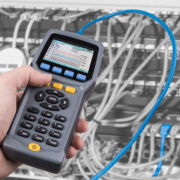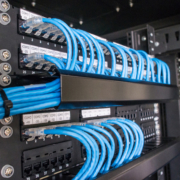Structured Cabling Survey FAQ’s
Do you charge for structured cabling surveys?
At NM Cabling, we offer free site surveys for a number of our services, including structured cabling. However, in some cases you may be charged for a survey.
When do you charge for a survey?
We generally charge for surveys that require us to travel a long distance. For instance, international surveys will be at a cost. Another example of a chargeable survey will be a client based in Scotland, Wales, Northern Ireland.
In addition, a charge will be applicable if we’re required to spend a considerable amount of time designing and suggesting solutions for an unknown quote specification. This is classed as design rather than a survey.
Do I get my money back if I go ahead with NM Cabling?
This is assessed on a case-by-case basis. However, after your structured cabling survey’s has been completed and quoted, don’t hesitate to ask our sales team as they may be able to deduct the overall quote.
How long does a structured cabling cabling survey take?
Every project and survey is different. The duration of the survey generally depends on the size of the project. The larger the project, the longer it’ll take to complete a thorough site survey. Commonly, the average structured cabling survey can last between 15 minutes to an hour.
How long do I need to wait for a survey?
In most cases we aim to attend a site survey within 48 business hours of receiving the enquiry, a further 48 business hours to return the quotation. Nonetheless, these are only guidelines, ultimately it depends on the size of the project. Smaller offices will have a quicker turn around time in comparison to large offices.
What does a survey entail?
The aim of a site survey is to give us a better understanding of the project at hand. Additionally, the survey gives us a chance to understand your requirements. In order to have an effective survey, you should send all relevant information prior to the site visit. This allows our Project managers to familiarise themselves with your project. As a result, they can offer detailed advice that’s specific to your requirements.
The main parts of a site visit are
- A discussion of your requirements
- Site walk through to visualise the requirements.
- Site walk through to determine cable routes and any potential obstacles
- Analysis of drawing
- Confirmation of the plan and discussion to prevent potential issues.
What is structured cabling?
Structured cabling is a system of cabling and associated hardware, which provides a comprehensive telecommunications infrastructure. This infrastructure serves a wide range of uses, including telephone services, data networking, and video distribution.
A well-designed structured cabling system provides the flexibility to accommodate changes in technology and business requirements over time. It also provides for the efficient use of space and supports the physical security of the cabling system.
Structured Cabling components
The term “structured cabling” typically refers to the cabling infrastructure found in commercial buildings, although it can also be used in residential applications. The components of a structured cabling system include:
• Cables: twisted pair, coaxial, and fibre optic
• Patch panels: used to terminate and connect cable runs
• Racks and cabinets: used to store and organize cabling components
• Work area outlets: used to provide access to the cabling system at the workstation
Data cabling used in structured cabling
The most common type of structured cabling is twisted pair cabling, which is used for telephone and data networking applications. Twisted pair cabling consists of two insulated copper wires that are twisted together to reduce interference from nearby electrical cables and other sources of radio frequency (RF) noise.
Coaxial cable is used for video applications such as cable television (CATV) and closed-circuit television (CCTV). Coaxial cable consists of a copper core surrounded by an insulating layer and a conductive shield. The shield protects the signal from interference and also provides a return path for the signal.
Fibre optic cable is used for high-speed data applications such as gigabit Ethernet and 10 Gigabit Ethernet. Fibre optic cable consists of a glass or plastic core surrounded by an insulating layer. The core is used to carry the signal, and the surrounding layer protects the core from damage.
Structured cabling systems
Structured cabling systems are often designed using a hierarchical topology, in which the cabling components are organized into levels based on their function. The most common levels are:
• Work area: The work area level is the lowest level of the hierarchy and consists of the cabling and hardware components that provide service to a single workstation
• Floor: The floor level is the next highest level and consists of the cabling and hardware components that serve a group of workstations on a single floor of a building.
• Building: The building level is the next highest level and consists of the cabling and hardware components that serve all the floors of a building.
• Campus: The campus level is the highest level of the hierarchy and consists of the cabling and hardware components that serve a group of buildings.
A well-designed structured cabling system provides the flexibility to accommodate changes in technology and business requirements over time. It also provides for the efficient use of space and supports the physical security of the cabling system.





